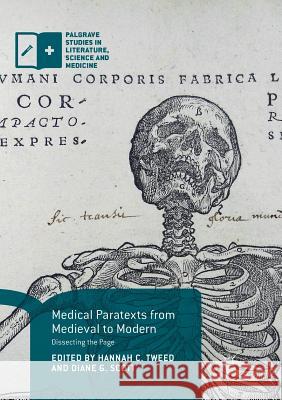Medical Paratexts from Medieval to Modern: Dissecting the Page » książka
topmenu
Medical Paratexts from Medieval to Modern: Dissecting the Page
ISBN-13: 9783030087869 / Angielski / Miękka / 2018 / 178 str.
Kategorie:
Kategorie BISAC:
Wydawca:
Palgrave MacMillan
Seria wydawnicza:
Język:
Angielski
ISBN-13:
9783030087869
Rok wydania:
2018
Dostępne języki:
Numer serii:
000778134
Ilość stron:
178
Waga:
0.24 kg
Wymiary:
21.01 x 14.81 x 1.07
Oprawa:
Miękka
Dodatkowe informacje:
Wydanie ilustrowane











